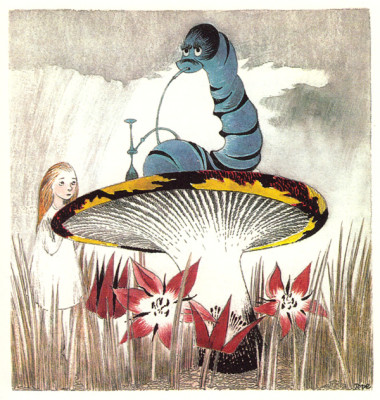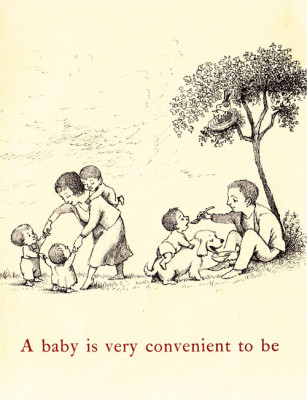
The Art of Self Renewal
“The self-renewing man … looks forward to an endless and unpredictable dialogue between his potentialities and the claims of life — not only the claims he encounters but the claims he invents.”
 In 1964, the prolific social science writer John W. Gardner published Self-Renewal: The Individual and the Innovative Society (public library) — a forgotten book of extraordinary prescience and warm wisdom, which rings even timelier today. It’s a must-read as much for entrepreneurs and leaders seeking to infuse their organizations with ongoing vitality as it is for all of us as individuals, on our private trajectories of self-transcendence and personal growth.
In 1964, the prolific social science writer John W. Gardner published Self-Renewal: The Individual and the Innovative Society (public library) — a forgotten book of extraordinary prescience and warm wisdom, which rings even timelier today. It’s a must-read as much for entrepreneurs and leaders seeking to infuse their organizations with ongoing vitality as it is for all of us as individuals, on our private trajectories of self-transcendence and personal growth.
Gardner explores what it takes for us — as individuals, as a society, even as a civilization — to cultivate the capacity for self-renewal so vital to countering “the dry rot produced by apathy, by rigidity and by moral emptiness,” which often comes with attaining a certain level of complacent comfort or success. Referencing his previous book,Excellence — an equally prescient exploration of the educational system, its promise and its limitations, and the role of high standards in cultivating character — Gardner writes:
High standards are not enough. There are kinds of excellence — very important kinds — that are not necessarily associated with the capacity for renewal. A society that has reached heights of excellence may already be caught in the rigidities that will bring it down. An institution may hold itself to the highest standards and yet already be entombed in the complacency that will eventually spell its decline.
And yet, noting that “social renewal depends ultimately on individuals,” Gardner writes:
If a society hopes to achieve renewal, it will have to be a hospitable environment for creative men and women. It will also have to produce men and women with the capacity for self-renewal… Men and women need not fall into a stupor of mind and spirit by the time they are middle-aged. They need not relinquish as early as they do the resilience of youth and the capacity to learn and grow.

Self-renewal, he points out, requires a certain give-a-shitness — as E.B. White wrote in his beautiful letter to a man who had lost faith in humanity, “As long as there is one upright man, as long as there is one compassionate woman, the contagion may spread and the scene is not desolate.” Gardner argues:
The renewal of societies and organizations can go forward only if someone cares. Apathy and lowered motivation are the most widely noted characteristics of a civilization on the downward path.
He later adds:
Everyone, either in his career or as a part-time activity, should be doing something about which he cares deeply. And if he is to escape the prison of the self, it must be something not essentially egocentric in nature.
Institutions are renewed by individuals who refuse to be satisfied with the outer husks of things. And self-renewal requires somewhat the same impatience with empty forms.
In a sentiment that John Mooallem would come to echo half a century later (“Maybe you have to believe in the value of everything to believe in the value of anything”), Gardner argues that self-renewal is impossible “unless we share a vision of something worth saving” and writes:
Unless we attend to the requirements of renewal, aging institutions and organizations will eventually bring our civilization to moldering ruin. Unless we cope with the ways in which modern society oppresses the individual, we shall lose the creative spark that renews both societies and . Unless we foster versatile, innovative and self-renewing men and women, all the ingenious social arrangements in the world will not help us.
Echoing Buckminster Fuller’s admonition against specialization and Frank Lloyd Wright’s famous aphorism that “an expert is a man who has stopped thinking because ‘he knows,’”) Gardner outlines the process by which we fizzle out, socially and personally:
A society decays when its institutions and individuals lose their vitality.
When organizations and societies are young, they are flexible, fluid, not yet paralyzed by rigid specialization and willing to try anything once. As the organization or society ages, vitality diminishes, flexibility gives way to rigidity, creativity fades and there is a loss of capacity to meet challenges from unexpected directions. Call to mind the adaptability of youth, and the way in which that adaptability diminishes with the years. Call to mind the vigor and recklessness of some new organizations and societies — our own frontier settlements, for example — and reflect on how frequently these qualities are buried under the weight of tradition and history.

Pointing to an infant’s openness to experiences and gradual acquisition of habits for navigating the world, Gardner echoes Henry Miller’s timeless wisdom on the secret of remaining young at heart and writes:
Each acquired attitude or habit, useful though it may be, makes a little less receptive to alternative ways of thinking and acting. He becomes more competent to function in his own environment, less adaptive to changes.
All of this seems to suggest that the critical question is how to stay young. But youth implies immaturity. And though everyone wants to be young, no one wants to be immature. Unfortunately, as many a youth-seeker has learned, the two are intertwined.
From this springs the natural question of how one might “advance toward maturity without advancing toward rigidity and senility,” to which Gardner answers:
There may be a point at which raw young vitality and mature competence and wisdom reach a kind of ideal balance, but there is no possibility of freezing change at that point, as one might stop the motion in a home movie. There is nothing static in these processes.
Once again, this brings to mind Henry Miller’s memorable observation that “all is creation, all is change, all is flux, all is metamorphosis,” as well as his longtime lover and lifelong friend Anaïs Nin’s defense of the fluid self. Gardner brings this paradox back to the notion of a vitally self-renewing society:
In the ever-renewing society what matters is a system or framework within which continuous innovation, renewal and rebirth can occur.
And yet, Gardner points out in a caveat all the more relevant today, it’s important to understand that renewal is different from “innovation,” more dimensional and integrated with the whole microcosm of life, more rooted in an appreciation of the fact that everything builds on what came before:
Renewal is not just innovation and change. It is also the process of bringing the results of change into line with our purposes. When our forebears invented the motor car, they had to devise rules of the road. Both are phases of renewal. When urban expansion threatens chaos, we must revive our conceptions of city planning and metropolitan government.
Mesmerized as we are by the idea of change, we must guard against the notion that continuity is a negligible — if not reprehensible — factor in human history. It is a vitally important ingredient in the life of individuals, organizations and societies. Particularly important to a society’s continuity are its long-term purposes and values. These purposes and values also evolve in the long run; but by being relatively durable, they enable a society to absorb change without losing its distinctive character and style. They do much to determine the direction of change. They insure a society will not be buffeted in all directions by every wind that blows.
A sensible view of these matters sees an endless interweaving of continuity and change.
The only stability possible is stability in motion.
Gardner goes on to explore all the ways in which we imprison ourselves — something Albert Camus had contemplated a decade earlier — and examines “the individual’s own intricately designed, self-constructed prison incapacity for self-renewal.” In one particularly interesting aside, he points to the commencement address genre — arguably the modern secular sermon — as a testament to how, unless we guard against it, life pushes us from a capacity for self-renewal to chronic rigidity: One of the most common commencement messages is to keep on growing and never settle, and yet Gardner notes that many of the wide-eyed recipients of that message are “absolutely mummified” by middle age and “even some of the people who make the speeches are mummified.” He considers what’s at play:
As we mature we progressively narrow the scope and variety of our lives. Of all the interests we might pursue, we settle on a few. Of all the people with whom we might associate, we select a small number. We become caught in a web of fixed relationships. We develop set ways of doing things.
Half a century before modern cognitive science revealed the same, Gardner observes one of our most toxic existential tendencies:
As the years go by we view our familiar surroundings with less and less freshness of perception. We no longer look with a wakeful, perceiving eye at the faces of people we see every day, nor at any other features of our everyday world.

Echoing the ethos of the marvelous London Jungle Book, Gardner notes that the vivid experience of travel holds such allure to most of us precisely because it offers such “freshness of perception”:
At home we have lost the capacity to see what is before us. Travel shakes us out of our apathy, and we regain an attentiveness that heightens every experience. The exhilaration of travel has many sources, but surely one of them is that we recapture in some measure the unspoiled awareness of children.
So what can we do to “avert the hardening of the arteries” that attacks both societies and individuals? Decades before Stanford psychologist Carol Dweck’spioneering work on “growth” vs. “fixed” mindsets, Gardner proposes a strikingly similar framework for understanding, and improving, our capacity for self-renewal:
Most human beings go through their lives only partially aware of the full range of their abilities.
Most abilities are not so readily evoked by the common circumstances of life. The “mute, inglorious Miltons” are more numerous than one might suppose, particularly in an age in which even an articulate Milton might go unnoticed, certainly unrewarded. Most of us have potentialities that have never been developed simply because the circumstances of our lives have never called them forth.
Exploration of the full range of his own potentialities is not something that the self-renewing man leaves to the chances of life. It is something he pursues systematically, or at least avidly, to the end of his days. He looks forward to an endless and unpredictable dialogue between his potentialities and the claims of life — not only the claims he encounters but the claims he invents. And by potentialities I mean not just skills, but the full range of his capacities for sensing, wondering, learning, understanding, loving, aspiring.
One prerequisite for self-renewal, Gardner argues, is self-knowledge — something all the more relevant today, when we’re so busy being productive that we neglect to be present, lulling ourselves into a trance of doing as we forget to be, becoming absent from our own lives. Gardner writes:
We can keep ourselves so busy, fill our lives with so many diversions, stuff our heads with so much knowledge, involve ourselves with so many people and cover so much ground that we never have time to probe the fearful and wonderful world within… By middle life most of us are accomplished fugitives from ourselves.
The individual who has become a stranger to himself has lost the capacity for genuine self-renewal.
Related to self-knowledge and of equal importance to our capacity for self-renewal is cultivating our capacity for love, as well as our capacity for friendship. Gardner writes:
Another characteristic of the self-renewing man is that he has mutually fruitful relations with other human beings. He is capable of accepting love and capable of giving it — both more difficult achievements than is commonly thought. He is capable of depending on others and of being depended upon. He can see life through another’s eyes and feel it through another’s heart…
The man or woman who cannot achieve these relationships is imprisoned, cut off from a great part of the world of experience. The joy and suffering of those we love are part of our own experience. We feel their triumphs and defeats, their hopes and fears, their anger and pity, and our lives are richer for it…
Love and friendship dissolve the rigidities of the isolated self, force new perspectives, alter judgments and keep in working order the emotional substratum on which all profound comprehension of human affairs must rest.
First published at brainpickings.org.
Image – depositphotos







